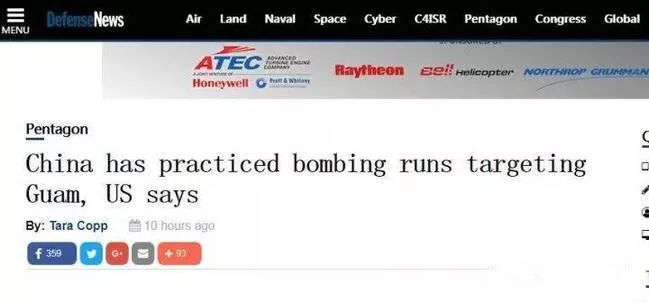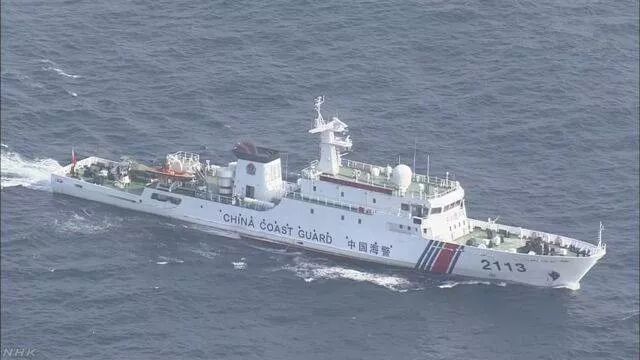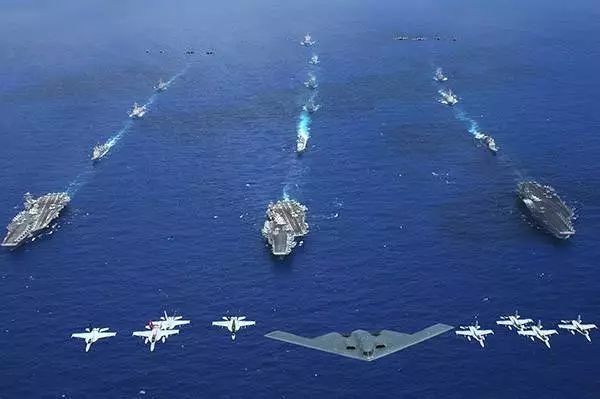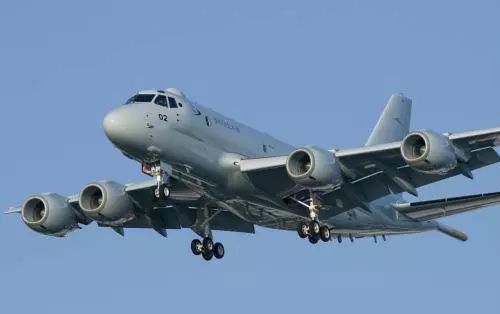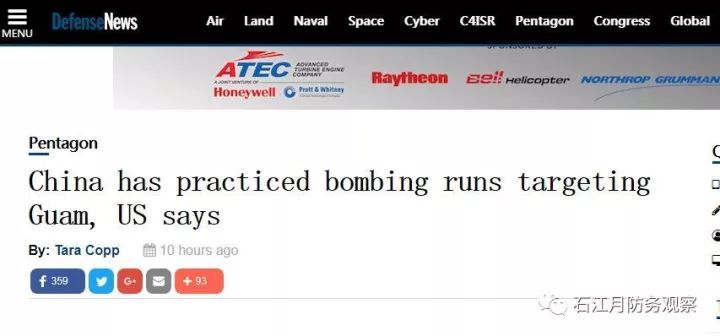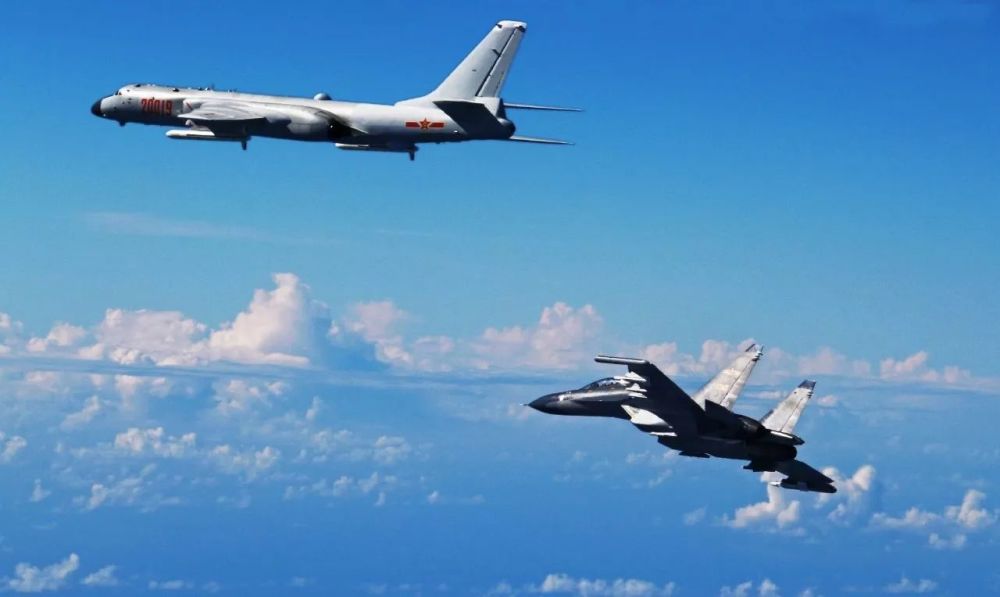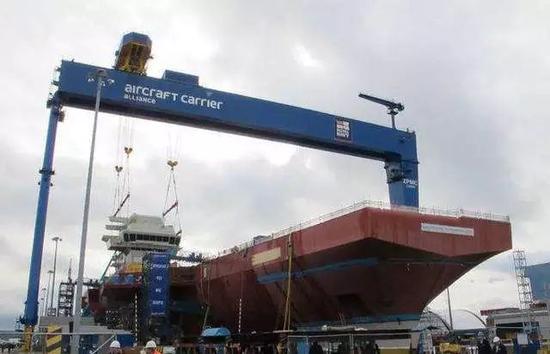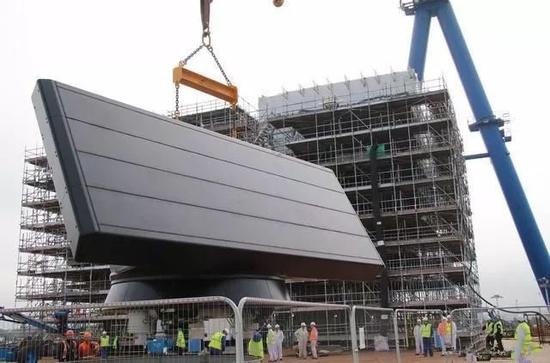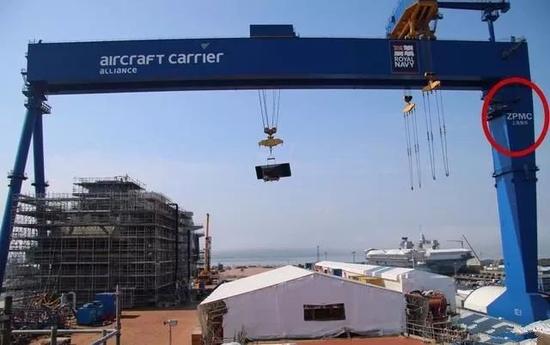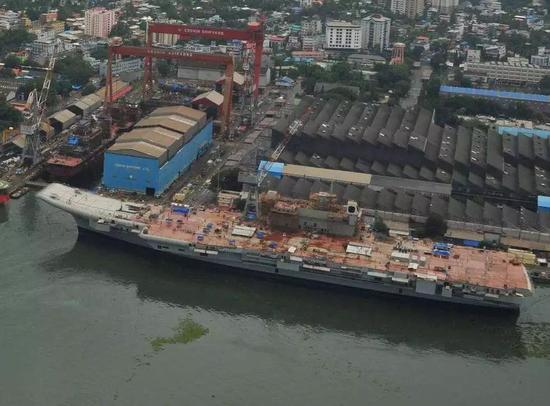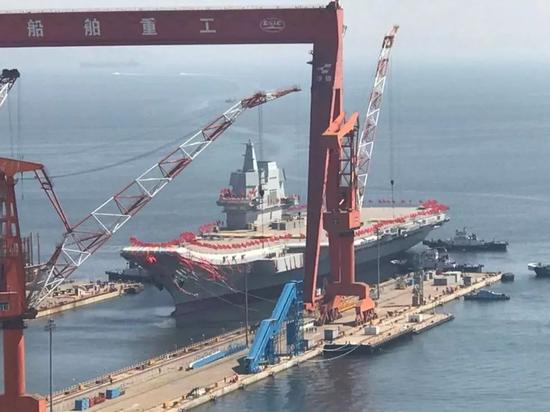Xi wants Trump to watch Guam under a mushroom cloud from Beijing. And PLA Bombers already practiced drills and prepared. It is not NK now, it is PLA! Dotard is going to HUAT AH!
http://edition.cnn.com/2017/08/29/asia/north-korea-missile-launch-guam-threat/index.html
Next target Guam, North Korea says
By Brad Lendon and Joshua Berlinger, CNN
Updated 0249 GMT (1049 HKT) August 31, 2017
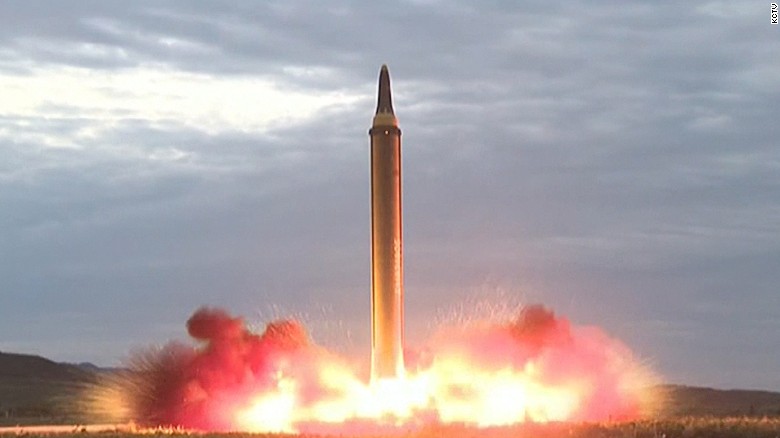

North Korea's Workers' Party: A dominant force
Story highlights
The country's state-run Korean Central News Agency reported leader Kim Jong Un presided over the dawn launch Tuesday of the "ultra-modern rocket system," the first missile ever fired from the capital Pyongyang.
North Korean officials told CNN in Pyongyang that Kim was "very satisfied with the performance of the missile."
The intermediate-range missile, identified by the North Koreans as the Hwasong-12, flew over Japan, further fueling tensions between North Korea and the United States and its allies, Japan and South Korea.
Early Wednesday, the US conducted a test intercept of a medium range ballistic missile off the coast of Hawaii, according to a statement from the US Missile Defense Agency.
A US official told CNN the test was planned for a long time, before North Korea's launch.
A photo released by North Korea state media appearing the show the launch of a missile which flew from North Korea over Japan on August 29.
The North Korean launch was "the first step of the military operation of the (North Korean military) in the Pacific and a meaningful prelude to containing Guam," state media said.
Guam governor's office said in a statement there is no change in the island's threat level.
"We knew, based on North Korea events in previous years, that with the joint exercise between the US, South Korea, and its Allies, we can expect rhetoric and activity in North Korea," said George Charfauros, Guam homeland security adviser.
South Korean President Moon Jae-in and Japanese Prime Minister Shinzo Abe both now believe "pressure on North Korea should be raised to its limit so that North Korea will voluntarily come to the table for dialogue," South Korean presidential spokesman Park Su-hyun said in a statement Wednesday.
The two also agreed that the United Nations Security Council should enact more detailed and effective sanctions against North Korea. A new round of sanctions against Pyongyang were unanimously approved by the Security Council earlier this month.
Abe and US President Donald Trump spoke on the phone late Wednesday Japan time, Abe told reporters.
"I cannot tell you about our forthcoming response to North Korea, but we have just completely agreed on it," Abe said.
Guam back in the crosshairs
Guam has long been a focal point of North Korea's anger against the US and is often a target of North Korean saber-rattling.
It was threatened specifically by North Korea in 2013 and again earlier this month, following a fiery exchange of threats and insults between Trump and the North Korean regime.
The small island in the Western Pacific is the closest US territory to North Korea and hosts two important US military installations.
One is Andersen Air Force Base, from which the US has been staging B-1 bomber flights over the Korean Peninsula, often in response to North Korea's missile tests.
The US flew bombers over North Korea following Pyongyang's two successful tests of intercontinental ballistic missiles in July.
Following Wednesday's missile interception test, MDA Director Lt. Gen. Sam Greaves said the US "will continue developing ballistic missile defense technologies to stay ahead of the threat as it evolves."
A medium-range ballistic missile target is launched from the Pacific Missile Range Facility on Kauai, Hawaii.
'All options on the table'
Tuesday's missile was fired just before 6 a.m. Japan time (Monday 5 p.m. ET). The launch set off emergency sirens in northern Japan, triggering text messages that warned residents to seek cover.
"The launch occurred in the vicinity of Sunan Air Base, North Korea and flew east ... The ballistic missile overflew the territory of northern Japan before landing in the Pacific Ocean approximately 500 nautical miles east of Japan," a statement from the Pentagon said.
It was the fourth missile North Korea fired in four days -- Pyongyang tested three short-range ballistic missiles, one of which failed, from Kangwon province that landed in water off the Korean Peninsula.
Kim Jong Un's regime regularly fires missiles into the sea between its own territory and Japan, however this is the first North Korean ballistic missile to ever fly over the country.
Though there is a political aspect to these launches, as much the international community sees them as a provocation North Korea conducts them in order to perfect its missile technology.
Trump reacts
The launch drew a strong rebuke from President Trump, who again warned that "all options are on the table."
"The world has received North Korea's latest message loud and clear: this regime has signaled its contempt for its neighbors, for all members of the United Nations, and for minimum standards of acceptable international behavior," he said Tuesday.
"Threatening and destabilizing actions only increase the North Korean regime's isolation in the region and among all nations of the world. All options are on the table."
The global community also swiftly condemned the launch as a violation of international law.
The United Nations Security Council demanded North Korea stop further missile launches, strongly condemning the country's "outrageous actions."
North Korea's August 29 missile test
Japanese Prime Minister Abe called the launch "the most serious and grave threat ever" against the country.
South Korea responded by conducting a bombing drill at 9:30 a.m. local time to test its "capability to destroy the North Korean leadership" in cases of emergency, an official with the country's Defense Ministry told CNN.
An undated photo appears to show North Korean leader Kim Jong Un overseeing a missile launch, likely to be the one launched by North Korea on August 29.
Retaliation for drills
North Korea state media gave more details about the motivation for the launch Wednesday, noting that it came on the 107th anniversary of the annexation of Korea by Japan in 1907.
It said it sent a strong message amid ongoing joint US-South Korean military drills in the southern half of the Korean Peninsula.
Washington and Seoul say are defensive in nature but Pyongyang believes are preparation for an eventual invasion.
Kim praised the crew's "smart and accurate movement" and said the drill "would offer them an opportunity for gaining a good experience in their rocket operation for an actual war," according to KCNA.
CNN's Richard Roth, K.J. Kwon, Euan McKirdy and Zachary Cohen contributed to this report.
https://www.cnbc.com/2017/10/31/china-is-said-to-have-practiced-bombing-attacks-against-guam.html
China is said to have practiced bombing attacks against Guam
Published 3:17 AM ET Tue, 31 Oct 2017 Updated 11:18 AM ET Tue, 31 Oct 2017 CNBC.com
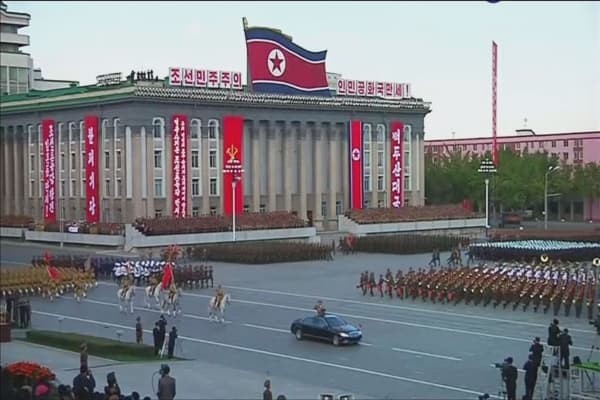
China is said to have practiced bombing attacks against Guam 8:48 AM ET Tue, 31 Oct 2017 | 00:44
China has flown bomber jets near the United States territory of Guam and practiced attacks against the island, according to U.S. military officials, Defense News reported Tuesday.
Chinese firepower, along with its host of provocative military activities, is causing the United States to worry about the country as a primary danger in the Pacific region — even as rogue nation North Koreacontinues to threaten international attacks, the report said.
Tensions with Pyongyang have not dissolved, but conflict with the country is still viewed as "a fight we can win," officials reportedly said.
With China however, which remains a "long-term challenge in the region," U.S. officials "worry about the way things are going," they said.
Chinese bombers are also flying in the vicinity of the state of Hawaii, according to the report.
Read the full story on Chinese military activity in the Pacific on Defense News.
WATCH: North Korea hacked Daewoo Shipbuilding, took warship blueprints: South Korea lawmaker
http://www.scmp.com/news/china/dipl...omber-runs-near-guam-aimed-sending-message-us
Chinese bomber runs near Guam aimed at sending a message to US, analysts say
US defence officials tell military news website they’re worried about potential threat from Beijing
PUBLISHED : Wednesday, 01 November, 2017, 7:01pm
UPDATED : Wednesday, 01 November, 2017, 10:37pm
Kristin Huang
Share
PrintEmail
Related topics
China military
More on this story
Diplomacy & Defence
US spy planes kept eye on Chinese scientists during expedition near Guam
5 Oct 2017
Related Articles
Diplomacy & Defence
Breakthrough to drive new launch system on Chinese aircraft carrier
1 Nov 2017
Society
China tests new spy drone in near space ‘death zone’
1 Nov 2017
Diplomacy & Defence
Xi’s letter to Tibetan herders a message on China-India border row
30 Oct 2017
China has flown bombers near the US territory of Guam, an American military news website reported, in a move analysts said was part of a deterrence strategy aimed at the United States.
The H-6K Badger warplanes – with 1,600km range air-launched cruise missiles – are testing US defence zones around Guam, the Military Times quoted unnamed US defence officials in the region as saying on Tuesday.
China’s bomber runs targeting Guam were part of a range of activities making US forces in the territory worry about the potential threat from Beijing – even as North Korea pursues its nuclear weapons programme, the report said.
“It’s very common for [People’s Republic of China] aircraft to intercept US aircraft” these days, one of the officials said. “The PRC is practising attacks on Guam.”
US spy planes kept eye on Chinese scientists during research expedition near Guam
China’s recent activities in the area suggested it was preparing to defend expanded boundaries, according to the officials.
“We now have, on a daily basis, armed Chinese Flankers and Japanese aircraft” coming in close proximity of each other, the officials said, adding that intercepts between the US and China were also increasing.
China’s defence ministry did not respond to a request for comment.
The H-6K, a strategic bomber that entered service in 2009, is designed for long-range and stand-off attacks and could strike US carrier battle groups and priority targets in Asia.
It has a combat range of 2,000km while the missile it carries extends the bomber’s strike range to 4,000km – meaning it can operate over the high seas.
The bombers were used to patrol the Scarborough Shoal area of the South China Sea – an area claimed by both Beijing and Manila – in July last year, according to Chinese state media.
Could drone that can deliver cargo to islets in South China Sea secure presence in disputed waters?
Collin Koh, a maritime security expert at Nanyang Technological University in Singapore, said China was trying to strengthen its deterrence capability by pushing further into the western Pacific Ocean.
“I believe China is first and foremost keen to intensify measures closer to shore, but pushing the envelope further out into the western Pacific also serves the purpose of enhancing deterrence against the US, with an overall strategic aim of raising the costs of Washington if it chooses to intervene militarily in, say, Taiwan or the East China Sea,” Koh said.
China first revealed its new-generation H-6K strategic bomber at a military parade in 2015 marking the 70th anniversary of the end of the second world war. The new aircraft will be equipped with DH-20 land-attack cruise missiles, putting Australia within striking distance. At present, only Russia and the US can launch cruise missiles from the air.
China protests over US Navy patrol in contested South China Sea waters
But military experts said shortfalls in the design would hold back its combat capabilities.
“Without mid-air refuelling and proper fighter escorts, these bombers are essentially sitting ducks out over the open western Pacific,” Koh said.
Given the limitations, Zhou Chenming, another military expert, said China was mainly using the warplane for nearshore operations.
“It’s absurd for China to deploy H-6Ks to attack Guam because Chinese missiles – or even nuclear weapons – can do the same job without dispatching personnel. Currently, those bombers mainly fly around Taiwan, sending a message to the island’s pro-independence forces,” Zhou said.
This article appeared in the South China Morning Post print edition as: Bombers ‘testing US defencesin Guam’
https://tw.news.yahoo.com/-022919842.html
中國演練攻擊關島 美視為潛在威脅

民報
國際中心/綜合報導
2017年11月2日 上午10:29

中國演練攻擊關島 美視為潛在威脅
美國國防新聞週刊(Defense News)引述美軍官員的話說,中國戰略轟炸機以美國關島為模擬攻擊目標,多次進行轟炸演練,還飛越夏威夷附近空域,測試美國的防空識別區。該官員強調,北京是太平洋最令人擔憂的潛在威脅。
國防新聞週刊網站報導指出,這些中國日益增加的行為,除了已經相當公開的南海人造島礁擴軍,中國戰鬥機隊在東海、南海及其他更遠地區上空的挑釁行動頻率,已達到每日出現的程度。中國也採取其他非軍事措施,被認為試圖使美國未來更難以在太平洋地區行動、防衛其盟邦。
中國2013年宣佈劃設東海防空識別區後,與日本戰機空中遭遇增加,日本為此將兩支戰鬥機中隊調往沖繩那霸基地,以利更能因應中國戰機活動;去年日本戰機緊急升空900架次,攔截挑戰日本防空識別區的中國戰機。官員說,「我們現在每天都有中國的蘇—27和日本的飛機近距離接觸」。
報導也指出,美國和中國間的空中攔截次數也正在增加。官員指出,掛載射程一千英里空射巡弋飛彈的中國「轟—6K」轟炸機,進行了「並非不頻繁的」飛行活動,測試關島周邊的美國防空識別區,「中國在演練攻擊關島」。不過絕大多數都未挑起如不安全飛行行為等事件,美方也照章回應,因此情況未進一步升高。
報導指出,中國正逐漸將其在南海取得的成果常態化,其他壓力包括美方估計多達十五萬艘中國商業漁船雖非海軍正式編制,但是聽命於軍方指揮,可以進行諸如協調、攻擊越南漁民等行為。
美方官員認為,中國這些活動顯示其正為捍衛擴張疆域做準備;若不受到挑戰,中國可能慢慢地迫使該區域國家放棄「以規則為基礎的國際秩序」,即依照現有國際條約規範行事,為了自身經濟而在安全事務上轉向與北京結盟。不過,美國官員強調,美國自視為太平洋強權,絕不容許此事發生。
為避免淪為中方第一波打擊對象,美國空軍正研究測試「敏捷戰鬥部署」,也就是在即將遭遇攻擊前,把先進戰機從日本的空軍基地分散到亞太地區10至15個偏遠島嶼機場。此種部署需要強大的後勤能力支援。
針對美方官員的說法,中國空軍專家傅前哨接受《環球時報》訪問時表示,解放軍新一代中遠程轟炸機轟6-K最大航程達8000公里,理論上足夠飛抵關島附近空域。但他說,對相關戰略目標實施打擊或模擬打擊,根本沒必要飛那麼近。現在轟炸機都攜帶遠程巡航導彈,在1500公里外都能對目標實施精確打擊。
★想看LIVE直播明星名嘴、超夯高清動漫、影劇影音、電競直播,就上Yahoo TV!一起看、一起聊
http://edition.cnn.com/2017/08/29/asia/north-korea-missile-launch-guam-threat/index.html
Next target Guam, North Korea says
By Brad Lendon and Joshua Berlinger, CNN
Updated 0249 GMT (1049 HKT) August 31, 2017


North Korea's Workers' Party: A dominant force
Story highlights
- Trump said "all options are on the table" in regards to the North Korean threat
- US conducted a missile defense test Wednesday
The country's state-run Korean Central News Agency reported leader Kim Jong Un presided over the dawn launch Tuesday of the "ultra-modern rocket system," the first missile ever fired from the capital Pyongyang.
North Korean officials told CNN in Pyongyang that Kim was "very satisfied with the performance of the missile."
The intermediate-range missile, identified by the North Koreans as the Hwasong-12, flew over Japan, further fueling tensions between North Korea and the United States and its allies, Japan and South Korea.
Early Wednesday, the US conducted a test intercept of a medium range ballistic missile off the coast of Hawaii, according to a statement from the US Missile Defense Agency.
A US official told CNN the test was planned for a long time, before North Korea's launch.
A photo released by North Korea state media appearing the show the launch of a missile which flew from North Korea over Japan on August 29.
The North Korean launch was "the first step of the military operation of the (North Korean military) in the Pacific and a meaningful prelude to containing Guam," state media said.
Guam governor's office said in a statement there is no change in the island's threat level.
"We knew, based on North Korea events in previous years, that with the joint exercise between the US, South Korea, and its Allies, we can expect rhetoric and activity in North Korea," said George Charfauros, Guam homeland security adviser.
South Korean President Moon Jae-in and Japanese Prime Minister Shinzo Abe both now believe "pressure on North Korea should be raised to its limit so that North Korea will voluntarily come to the table for dialogue," South Korean presidential spokesman Park Su-hyun said in a statement Wednesday.
The two also agreed that the United Nations Security Council should enact more detailed and effective sanctions against North Korea. A new round of sanctions against Pyongyang were unanimously approved by the Security Council earlier this month.
Abe and US President Donald Trump spoke on the phone late Wednesday Japan time, Abe told reporters.
"I cannot tell you about our forthcoming response to North Korea, but we have just completely agreed on it," Abe said.
Guam back in the crosshairs
Guam has long been a focal point of North Korea's anger against the US and is often a target of North Korean saber-rattling.
It was threatened specifically by North Korea in 2013 and again earlier this month, following a fiery exchange of threats and insults between Trump and the North Korean regime.
The small island in the Western Pacific is the closest US territory to North Korea and hosts two important US military installations.
One is Andersen Air Force Base, from which the US has been staging B-1 bomber flights over the Korean Peninsula, often in response to North Korea's missile tests.
The US flew bombers over North Korea following Pyongyang's two successful tests of intercontinental ballistic missiles in July.
Following Wednesday's missile interception test, MDA Director Lt. Gen. Sam Greaves said the US "will continue developing ballistic missile defense technologies to stay ahead of the threat as it evolves."
A medium-range ballistic missile target is launched from the Pacific Missile Range Facility on Kauai, Hawaii.
'All options on the table'
Tuesday's missile was fired just before 6 a.m. Japan time (Monday 5 p.m. ET). The launch set off emergency sirens in northern Japan, triggering text messages that warned residents to seek cover.
"The launch occurred in the vicinity of Sunan Air Base, North Korea and flew east ... The ballistic missile overflew the territory of northern Japan before landing in the Pacific Ocean approximately 500 nautical miles east of Japan," a statement from the Pentagon said.
It was the fourth missile North Korea fired in four days -- Pyongyang tested three short-range ballistic missiles, one of which failed, from Kangwon province that landed in water off the Korean Peninsula.
Kim Jong Un's regime regularly fires missiles into the sea between its own territory and Japan, however this is the first North Korean ballistic missile to ever fly over the country.
Though there is a political aspect to these launches, as much the international community sees them as a provocation North Korea conducts them in order to perfect its missile technology.
Trump reacts
The launch drew a strong rebuke from President Trump, who again warned that "all options are on the table."
"The world has received North Korea's latest message loud and clear: this regime has signaled its contempt for its neighbors, for all members of the United Nations, and for minimum standards of acceptable international behavior," he said Tuesday.
"Threatening and destabilizing actions only increase the North Korean regime's isolation in the region and among all nations of the world. All options are on the table."
The global community also swiftly condemned the launch as a violation of international law.
The United Nations Security Council demanded North Korea stop further missile launches, strongly condemning the country's "outrageous actions."
North Korea's August 29 missile test
- North Korea fires missile that overflies Japan
- After 'fire and fury,' Trump's roller coaster comes full-circle
- Are US options diminishing?
- South Korea holds live-fire drills that simulate destroying North Korea's leadership
Japanese Prime Minister Abe called the launch "the most serious and grave threat ever" against the country.
South Korea responded by conducting a bombing drill at 9:30 a.m. local time to test its "capability to destroy the North Korean leadership" in cases of emergency, an official with the country's Defense Ministry told CNN.
An undated photo appears to show North Korean leader Kim Jong Un overseeing a missile launch, likely to be the one launched by North Korea on August 29.
Retaliation for drills
North Korea state media gave more details about the motivation for the launch Wednesday, noting that it came on the 107th anniversary of the annexation of Korea by Japan in 1907.
It said it sent a strong message amid ongoing joint US-South Korean military drills in the southern half of the Korean Peninsula.
Washington and Seoul say are defensive in nature but Pyongyang believes are preparation for an eventual invasion.
Kim praised the crew's "smart and accurate movement" and said the drill "would offer them an opportunity for gaining a good experience in their rocket operation for an actual war," according to KCNA.
CNN's Richard Roth, K.J. Kwon, Euan McKirdy and Zachary Cohen contributed to this report.
https://www.cnbc.com/2017/10/31/china-is-said-to-have-practiced-bombing-attacks-against-guam.html
China is said to have practiced bombing attacks against Guam
- China has flown bomber jets in the vicinity of the U.S. territory of Guam and even practiced attacks on the island, Defense News reported Tuesday
- Chinese firepower, along with its host of provocative military activities, is causing the United States to worry about the country as the primary danger in the Pacific region
- Chinese bombers are also said to have flown near Hawaii
Published 3:17 AM ET Tue, 31 Oct 2017 Updated 11:18 AM ET Tue, 31 Oct 2017 CNBC.com

China is said to have practiced bombing attacks against Guam 8:48 AM ET Tue, 31 Oct 2017 | 00:44
China has flown bomber jets near the United States territory of Guam and practiced attacks against the island, according to U.S. military officials, Defense News reported Tuesday.
Chinese firepower, along with its host of provocative military activities, is causing the United States to worry about the country as a primary danger in the Pacific region — even as rogue nation North Koreacontinues to threaten international attacks, the report said.
Tensions with Pyongyang have not dissolved, but conflict with the country is still viewed as "a fight we can win," officials reportedly said.
With China however, which remains a "long-term challenge in the region," U.S. officials "worry about the way things are going," they said.
Chinese bombers are also flying in the vicinity of the state of Hawaii, according to the report.
Read the full story on Chinese military activity in the Pacific on Defense News.
WATCH: North Korea hacked Daewoo Shipbuilding, took warship blueprints: South Korea lawmaker
http://www.scmp.com/news/china/dipl...omber-runs-near-guam-aimed-sending-message-us
Chinese bomber runs near Guam aimed at sending a message to US, analysts say
US defence officials tell military news website they’re worried about potential threat from Beijing
PUBLISHED : Wednesday, 01 November, 2017, 7:01pm
UPDATED : Wednesday, 01 November, 2017, 10:37pm
Kristin Huang
Share
PrintEmail
Related topics
China military
Diplomacy & Defence
US spy planes kept eye on Chinese scientists during expedition near Guam
5 Oct 2017
Related Articles
Diplomacy & Defence
Breakthrough to drive new launch system on Chinese aircraft carrier
1 Nov 2017
Society
China tests new spy drone in near space ‘death zone’
1 Nov 2017
Diplomacy & Defence
Xi’s letter to Tibetan herders a message on China-India border row
30 Oct 2017
China has flown bombers near the US territory of Guam, an American military news website reported, in a move analysts said was part of a deterrence strategy aimed at the United States.
The H-6K Badger warplanes – with 1,600km range air-launched cruise missiles – are testing US defence zones around Guam, the Military Times quoted unnamed US defence officials in the region as saying on Tuesday.
China’s bomber runs targeting Guam were part of a range of activities making US forces in the territory worry about the potential threat from Beijing – even as North Korea pursues its nuclear weapons programme, the report said.
“It’s very common for [People’s Republic of China] aircraft to intercept US aircraft” these days, one of the officials said. “The PRC is practising attacks on Guam.”
US spy planes kept eye on Chinese scientists during research expedition near Guam
China’s recent activities in the area suggested it was preparing to defend expanded boundaries, according to the officials.
“We now have, on a daily basis, armed Chinese Flankers and Japanese aircraft” coming in close proximity of each other, the officials said, adding that intercepts between the US and China were also increasing.
China’s defence ministry did not respond to a request for comment.
The H-6K, a strategic bomber that entered service in 2009, is designed for long-range and stand-off attacks and could strike US carrier battle groups and priority targets in Asia.
It has a combat range of 2,000km while the missile it carries extends the bomber’s strike range to 4,000km – meaning it can operate over the high seas.
The bombers were used to patrol the Scarborough Shoal area of the South China Sea – an area claimed by both Beijing and Manila – in July last year, according to Chinese state media.
Could drone that can deliver cargo to islets in South China Sea secure presence in disputed waters?
Collin Koh, a maritime security expert at Nanyang Technological University in Singapore, said China was trying to strengthen its deterrence capability by pushing further into the western Pacific Ocean.
“I believe China is first and foremost keen to intensify measures closer to shore, but pushing the envelope further out into the western Pacific also serves the purpose of enhancing deterrence against the US, with an overall strategic aim of raising the costs of Washington if it chooses to intervene militarily in, say, Taiwan or the East China Sea,” Koh said.
China first revealed its new-generation H-6K strategic bomber at a military parade in 2015 marking the 70th anniversary of the end of the second world war. The new aircraft will be equipped with DH-20 land-attack cruise missiles, putting Australia within striking distance. At present, only Russia and the US can launch cruise missiles from the air.
China protests over US Navy patrol in contested South China Sea waters
But military experts said shortfalls in the design would hold back its combat capabilities.
“Without mid-air refuelling and proper fighter escorts, these bombers are essentially sitting ducks out over the open western Pacific,” Koh said.
Given the limitations, Zhou Chenming, another military expert, said China was mainly using the warplane for nearshore operations.
“It’s absurd for China to deploy H-6Ks to attack Guam because Chinese missiles – or even nuclear weapons – can do the same job without dispatching personnel. Currently, those bombers mainly fly around Taiwan, sending a message to the island’s pro-independence forces,” Zhou said.
This article appeared in the South China Morning Post print edition as: Bombers ‘testing US defencesin Guam’
https://tw.news.yahoo.com/-022919842.html
中國演練攻擊關島 美視為潛在威脅

民報
國際中心/綜合報導
2017年11月2日 上午10:29

中國演練攻擊關島 美視為潛在威脅
美國國防新聞週刊(Defense News)引述美軍官員的話說,中國戰略轟炸機以美國關島為模擬攻擊目標,多次進行轟炸演練,還飛越夏威夷附近空域,測試美國的防空識別區。該官員強調,北京是太平洋最令人擔憂的潛在威脅。
國防新聞週刊網站報導指出,這些中國日益增加的行為,除了已經相當公開的南海人造島礁擴軍,中國戰鬥機隊在東海、南海及其他更遠地區上空的挑釁行動頻率,已達到每日出現的程度。中國也採取其他非軍事措施,被認為試圖使美國未來更難以在太平洋地區行動、防衛其盟邦。
中國2013年宣佈劃設東海防空識別區後,與日本戰機空中遭遇增加,日本為此將兩支戰鬥機中隊調往沖繩那霸基地,以利更能因應中國戰機活動;去年日本戰機緊急升空900架次,攔截挑戰日本防空識別區的中國戰機。官員說,「我們現在每天都有中國的蘇—27和日本的飛機近距離接觸」。
報導也指出,美國和中國間的空中攔截次數也正在增加。官員指出,掛載射程一千英里空射巡弋飛彈的中國「轟—6K」轟炸機,進行了「並非不頻繁的」飛行活動,測試關島周邊的美國防空識別區,「中國在演練攻擊關島」。不過絕大多數都未挑起如不安全飛行行為等事件,美方也照章回應,因此情況未進一步升高。
報導指出,中國正逐漸將其在南海取得的成果常態化,其他壓力包括美方估計多達十五萬艘中國商業漁船雖非海軍正式編制,但是聽命於軍方指揮,可以進行諸如協調、攻擊越南漁民等行為。
美方官員認為,中國這些活動顯示其正為捍衛擴張疆域做準備;若不受到挑戰,中國可能慢慢地迫使該區域國家放棄「以規則為基礎的國際秩序」,即依照現有國際條約規範行事,為了自身經濟而在安全事務上轉向與北京結盟。不過,美國官員強調,美國自視為太平洋強權,絕不容許此事發生。
為避免淪為中方第一波打擊對象,美國空軍正研究測試「敏捷戰鬥部署」,也就是在即將遭遇攻擊前,把先進戰機從日本的空軍基地分散到亞太地區10至15個偏遠島嶼機場。此種部署需要強大的後勤能力支援。
針對美方官員的說法,中國空軍專家傅前哨接受《環球時報》訪問時表示,解放軍新一代中遠程轟炸機轟6-K最大航程達8000公里,理論上足夠飛抵關島附近空域。但他說,對相關戰略目標實施打擊或模擬打擊,根本沒必要飛那麼近。現在轟炸機都攜帶遠程巡航導彈,在1500公里外都能對目標實施精確打擊。
★想看LIVE直播明星名嘴、超夯高清動漫、影劇影音、電競直播,就上Yahoo TV!一起看、一起聊

